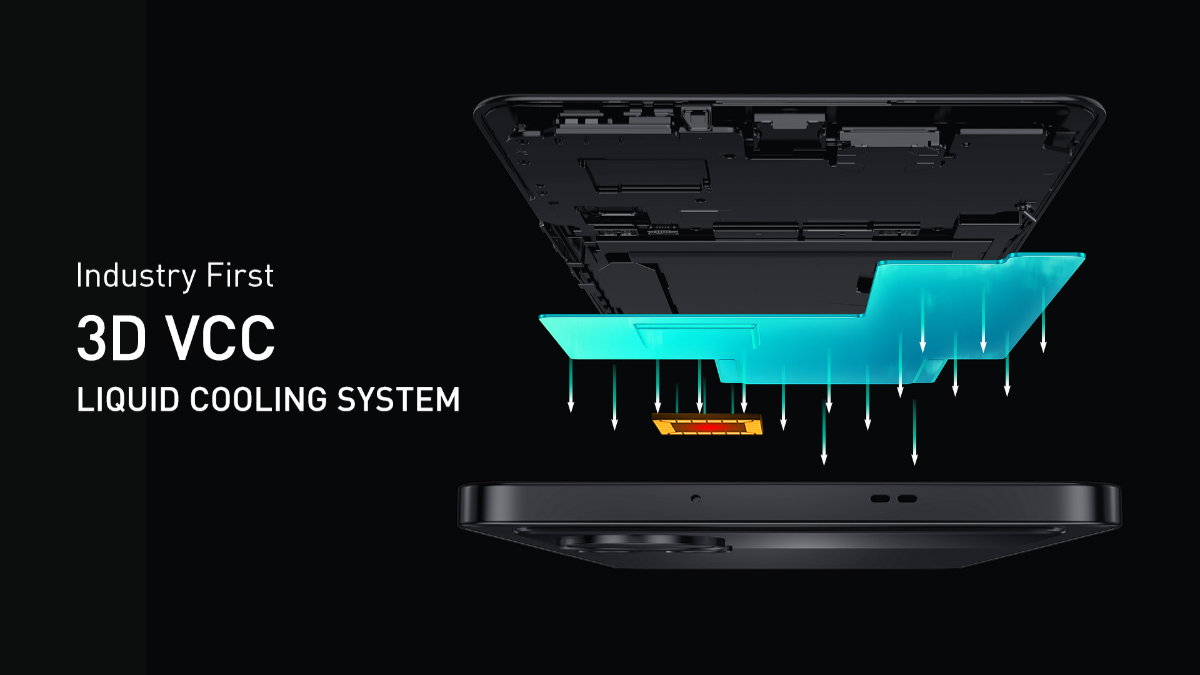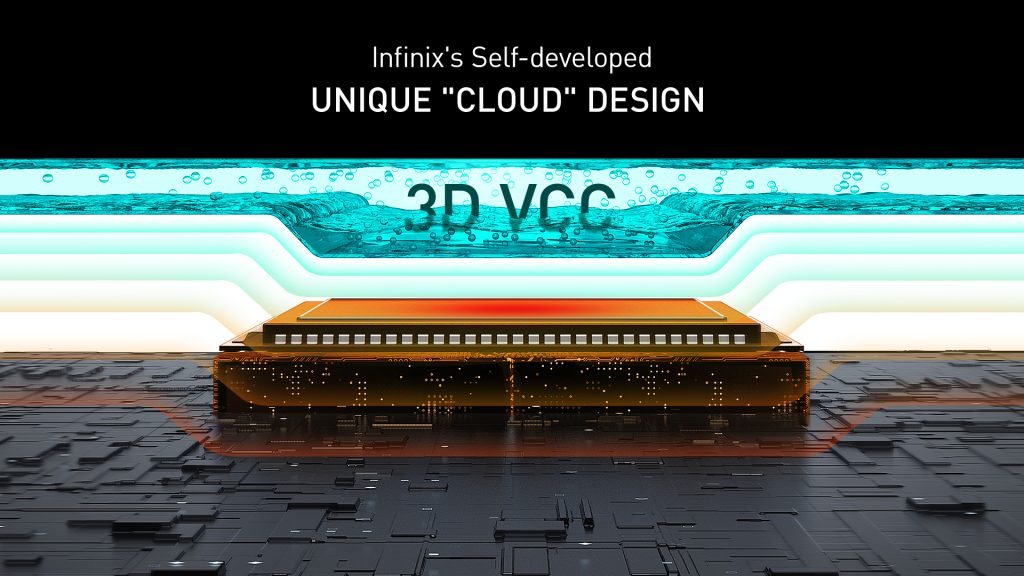Infinix Introduces 3D Vapour Cloud Chamber Liquid Cooling Technology

Infinix has introduced its 3D Vapor Cloud Chamber (3D VCC) Liquid Cooling Technology today. For the first time, the design team achieved an increase in chamber volume by using innovative design on the dimensionality of the VC shape. That further improves heat dissipation and allows for better performance.
This inventive solution addresses some high-temperature-related challenges for high-integration and high-power smartphones, such as CPU frequency reduction, frame rate drops, or frozen screens. The China National Intellectual Property Administration has certified this new technology.
Infinix’s Self-Developed 3D VCC Technology with Unique Cloud Design
The 3D Vapor Cloud Chamber Liquid Cooling Technology is a big improvement over regular VC. The evaporator’s volume, water storage capacity, and heat flux were increased by adding bumps. Overall, water injection volume and Q max increased by 20% compared to conventional VC.
Heat from the VC vaporizes water in the evaporator, removing excess heat. Hot steam goes into the condenser, where it cools and condenses. It then goes back to the evaporator through an internal wick structure, making a hot and cold circulation system with water and steam.
By adding a bump to the front of the case, the 3D Vapor Cloud Chamber can almost touch the SoC chip, which lowers its thermal resistance. This increases thermal conductivity, performance, and heat dissipation by reducing shield-to-vapor chamber thermal resistance. When compared to 2D designs, the new 3D VCC lowers the temperature by three degrees and gets rid of heat 12.5% more quickly.

The Challenges faced
Infinix’s R & D team designed the 3D internal construction to balance flatness and internal chamber volume. Second, maintaining the wick structure in 3D was difficult. Traditional VC wick architectures are flat and can fold in the 3D cloud transition area, producing chamber blockage.
Using a sophisticated capillary structure density analysis and an advanced welding technique, Infinix’s R & D team improved wick performance. Also considered: front housing adaptation. Infinix’s R & D team assessed the front housing opening and alloy strength to reduce thermal resistance, resulting in front housing adaption.
Keeping with its philosophy “The Future is Now,” Infinix said that it will explore smartphone heat dissipation technology. Infinix will make VCs that are thinner and have more bumps. They will also come up with creative ways to use materials and may even combine the smartphone’s centre frame and 3D VCC into one piece or shrink the entire computer cooling module to fit inside the phone. Driven by a worldwide vision, Infinix will continue to produce fantastic products for consumers with its strong innovation skills, giving them the finest smartphones in their price range.
Speaking on the introduction, Manfred Hong, Senior Product Director of Infinix, said
Regular smartphone gamers players care about performance, while advanced players emphasize heat dissipation due to its direct impact on performance. As the 5G era poses new challenges to the heat dissipation technique, technology development drives innovations from traditional heat pipes to VC, a leap from line to surface basis, and now further upgrades from a flat surface to a three-dimension basis to form Infinix 3D Vapor Cloud Chamber Liquid Cooling. This technology not only exhibits Infinix’s technical foundation and innovative spirit but also represents a huge step towards technological progress.